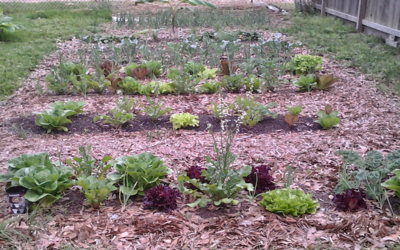Leaf Mulch is a layer of shredded leaves, which are applied on the soil surface. Truth be said, mulch can be almost any material. To save and enrich the soil of your garden, just spread around the plants. They are another conventional method of maintaining soil moisture, and the coverage they provide can suppress weeds.

Method of making leaf mulch: –
1. Making leaf mulches is very easy, and there are several ways to do so. First of all, you need to collect any fall autumn leaves.
2. When collecting leaves, you should avoid using any that are diseased, because you will only take risk of spreading the disease to your other plants if you use them as leaf much. You should also avoid using leaves that are mixed with garbage, as the litter will struggle to break down and add contamination to your soil and leaf mulch.
3. Once you have collected all the leaves you need, you need to piece them. Most of the best garden spaces will shred the leaves, as they are collected, making the whole process of making leaf mulch unusually quick. If you have collected leaves with your hands, then you can use a leaf or garden shredder. Another option is to place all the leaves in a plastic rubbish bin and using a grass trimmer a bit like a kitchen blender.
Uses: –
Once all your leaves have been cut to a suitable size, then lay the leaves in your flower beds. Approximately 2 to 3 inches thick. Make sure that the mulch does not smoother the small plants and make sure that the mulch does not touch the stems of any plants. Try and stay a few inches away from the stems. It is the best practice to avoid plants directly touching any decomposing material like leaf mulch.
1. Use 4 to 5 inches around trees and shrubs to help protect their bases.
2. From late autumn, use mulch to cure rose bushes. Remember to remove this spring when the growth cycle starts again.
3. Working mulch back into your garden’s coil will mean your means soil will start fill with earthworms and other beneficial organisms. Meaning a healthier garden.
4. Make sure to shred leaves as much as you can. The section of whole leaves can bind together and become matted, which meaning water cannot pass through the surface. By reducing their size, you reduce this risk and give micro-organisms more surface area to work with.
5. Leaf malt is carbon-rich (brown-material), use it in your compost pile to balance out nitrogen-rich (green-material) waste such as fresh grass clippings.
Benefit::-
Beside keeping the weed growth low, using mulch can help your yard in many ways, including the following:
1. Reduce water loss in the soil.
2. Controlling erosion.
3. Regulating soil temperature (keeping it cooler in summer, warmer in winter).
4. Improving the soil, once the mulch has broken down (in the case of the organic kinds of mulches, such as shredded leaves).
5. Drawing beneficial worms to the garden.
6. Keeping decorative fruits up off the bare ground, which helps preserve an unspoiled appearance

Poonam Singh
Poonam Singh, M.Sc.(Bio-Chemistry), Content writer, Self Shiksha, Lcoatips, Candidviews, Quikpills and Former Research Director at NEEW
